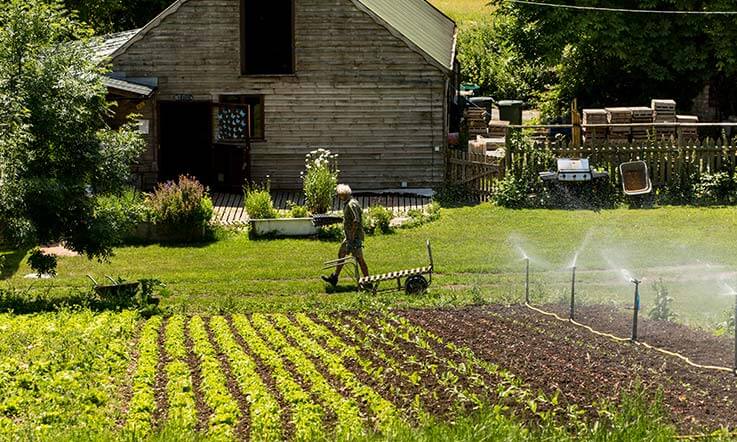On the 5th January 2024 we saw the latest update to Defra’s post-Brexit agricultural transition plan, headlining: 50 new actions in ELM to be released in 2024, a 10% increase in SFI and CS payment rates, a single application service for farmers to apply for SFI and CS Mid Tier, and ‘premium’ payments for environmentally ambitious actions (including agroforestry). There was also an update on how farm tenants fit into the ELM, which was welcome.
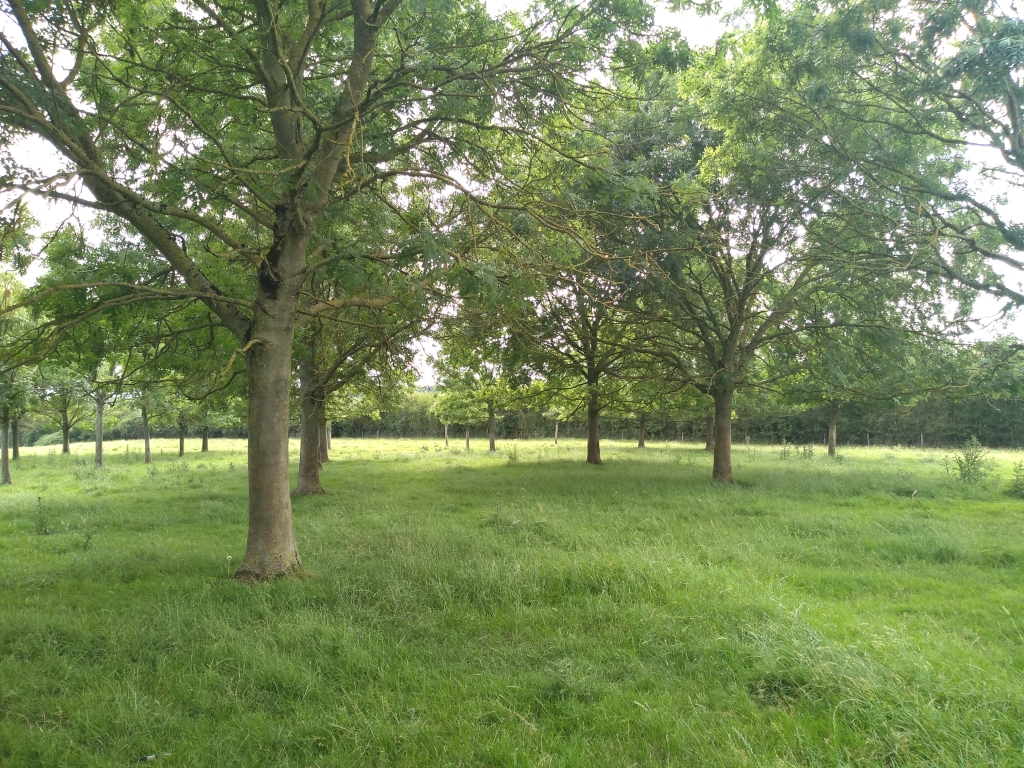
For agroforestry, the information given was preliminary with the promise of more detail later in the year. however we will attempt to piece together some more information based on working with Defra on the Agroforestry ELM Test project. More detail is available for hedgerows, wood pasture, and parkland. So let us begin with these.
To complement existing CS BN11 and BE3 for planting and nature sensitive management of hedgerows respectively, there will be the actions outlined in Table 1 under SFI.
Table 1. Hedgerow actions under SFI. Table taken from here.
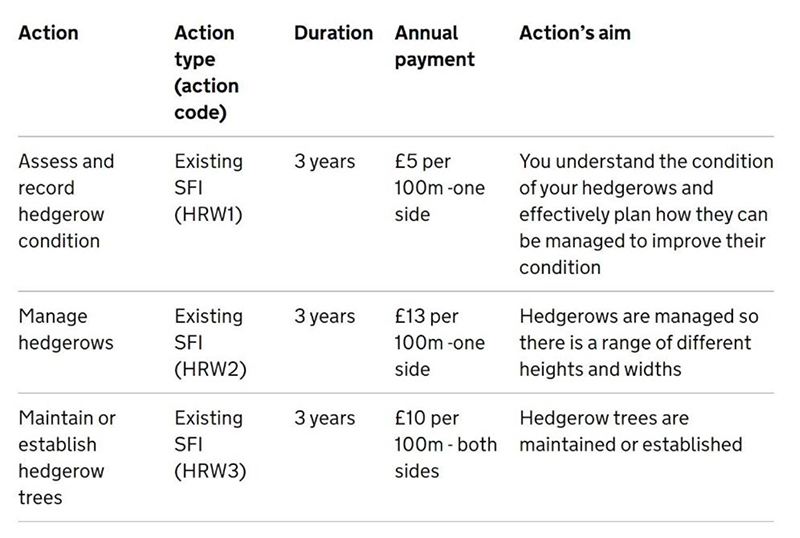
There are also new actions for the maintenance of dry stone wall, earthbanks and hedgebanks, which can be seen here.
Updated CS actions for the creation and maintenance of wood pasture and parkland (WD5, WD6, WD10, WD11, WD12) are shown in Table 2.
Table 2. Updated CS hedgerow actions for the creation, restoration and management of wood pasture and parkland. Table taken from here.

Actions on trees and woodland are a bit more extensive and complex but you can see what is being offered here.
For classic in-field agroforestry, (Tables 3-5), only maintenance payments, not creation payments, have been outlined, and there is no indication what is meant by “high”, “medium”, and “low” density agroforestry. There are neither indications which scheme (SFI or CS) each action will go into. Arable and pastoral agroforestry are not differentiated, which is interesting as they had been during discussions as part of the Test & Trial process.
Table 3. Actions to maintain high or medium density in-field agroforestry. Table taken from here
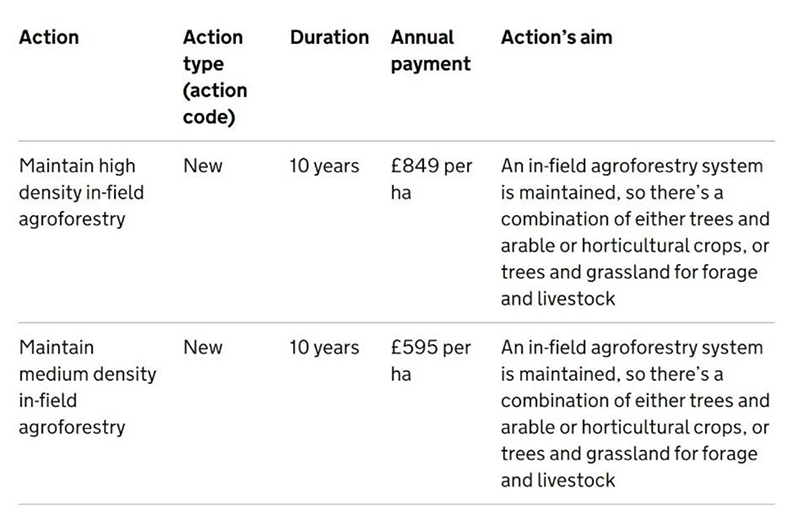
Table 4. Actions to maintain low density in-field agroforestry. Table taken from here.
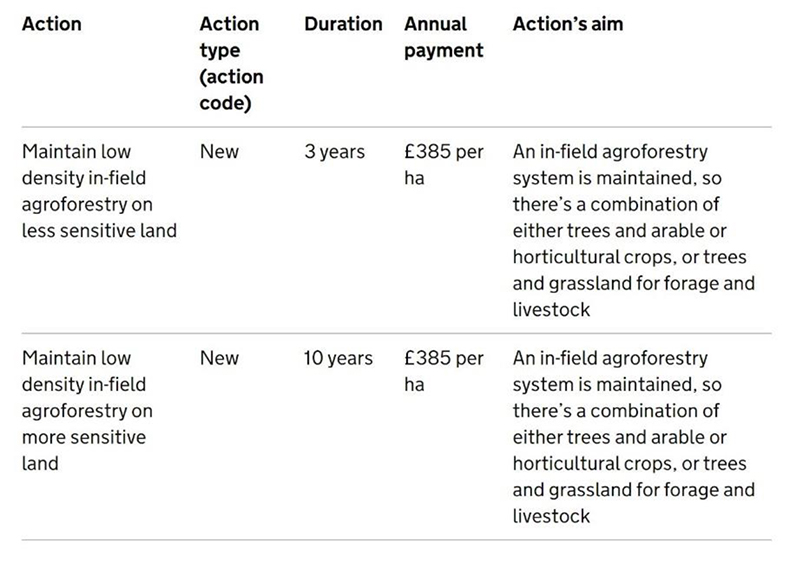
Table 5. Actions to maintain very low density in-field agroforestry. Table taken from here.
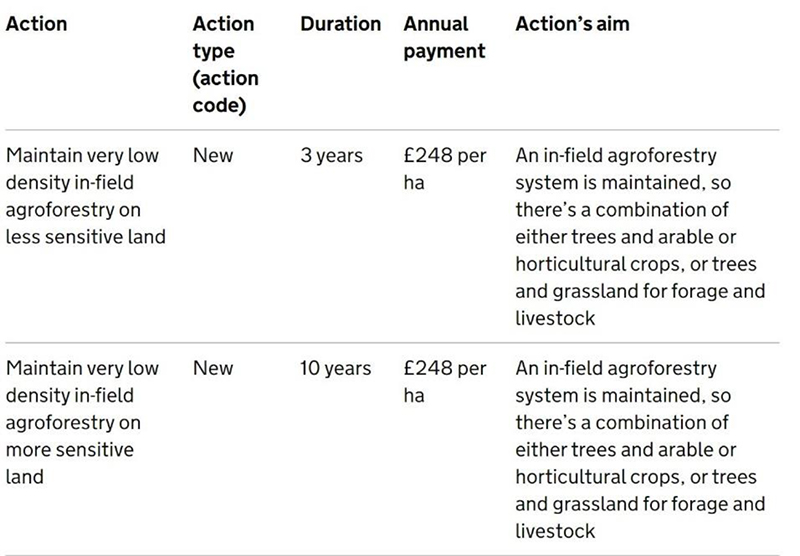
As Defra have released new updates on farm tenancy in ELM, with a key element being that SFI agreements will be only three years, we can infer from the table that low and very low density agroforestry on low sensitivity land will be in SFI and high and medium and high density agroforestry in CS. Any agroforestry on land with cultural or environmental sensitivities will be in CS. This means that farmers with low or very low density agroforestry on land with few sensitivities will be able to apply and get their payment with a minimum of fuss, whereas those in CS will be expected to write a more comprehensive management plan and applications may be subject to additional regulations.
What are farmers likely to think of these payment levels? In our final report for the Agroforestry ELM Test we asked 30 farmers what they think maintenance rates should be for an agroforestry system at 150stems/ha (likely CS “medium”). A majority of farmers said the payment should be greater than £125, so with the proposed payment of £595, most farmers should be happy.
Finally, and mentioned briefly above, the update gives some clarification on the tenancy issue in ELM. Tenants will be offered three-year SFI agreements to align with the average length of Farm Business Tenancies; they will not be required to obtain landlord consent for actions; they will be able to leave the agreement before three years if their circumstances change; and they will be able to enter an agreement even if their tenancy does not stretch three years. Some of these proposals sit a little awkwardly with agroforestry. Major changes to land management such as planting in-field trees would normally be with landowner consent. It also introduces the possibility that, if for example, a landowner agrees to agroforestry only grudgingly with the tenant, and the tenant leaves after 3 years, the trees could conceivably be torn out.
Colin R. Tosh and Will Simonson 15/01/2024
